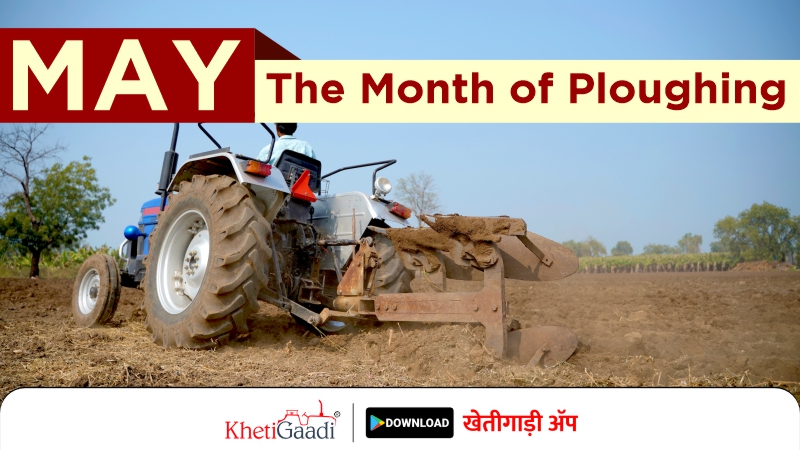Ploughing in India is a common agricultural practice that involves breaking up the soil to prepare it for planting crops. It is usually done using a plough, which is a farming tool with a long blade or several blades that is drawn through the soil by a tractor, animal, or human.
In India, ploughing is an ancient technique that has been used for centuries to cultivate the land. Traditional ploughs used in India are made of wood and are pulled by oxen, although modern tractors are also used for ploughing in many parts of the country.
The ploughing season in India generally starts in June and continues until November, coinciding with the monsoon season. During this time, farmers prepare their fields by ploughing the soil, removing weeds, and adding fertilizers to improve soil fertility.
In some parts of India, conservation ploughing techniques are being used to reduce soil erosion and conserve water. These methods involve ploughing the land in a way that leaves crop residues on the soil surface, which helps to prevent soil erosion and retain moisture in the soil.
Ploughing remains a crucial component of agriculture in India, helping farmers to prepare their land for planting and producing food for the country’s large and growing population.
May is often associated with spring planting and the start of agricultural activities in many parts of the world, particularly in the Northern Hemisphere. In traditional farming communities, May marks the beginning of the planting season, which includes ploughing the fields to prepare them for sowing crops. Therefore, May is often referred to as the “month of ploughing.”
Ploughing involves turning over the soil to loosen it and expose the nutrient-rich layer beneath the surface. This makes it easier for crops to grow and also helps to control weeds and pests. In some areas, ploughing is still done using traditional methods, such as with a horse-drawn plough, while in others, modern machinery is used.
In addition to ploughing, May is also a time for other important agricultural activities, such as sowing seeds, fertilizing crops, and controlling pests and weeds. Farmers and gardeners alike take advantage of the warmer weather and longer days to get their fields and gardens ready for the growing season ahead.
Ploughing time in India varies depending on the region and the type of crops being cultivated. In general, ploughing is done just before the sowing season begins. The sowing season in India depends on the monsoon season, which usually starts in June and ends in September.
Ploughing time in India can range from a few weeks to several months, depending on the specific region and the crops being cultivated.
Ploughing is a common agricultural practice used for preparing the soil for planting crops. It involves the use of a plough to turn over the top layer of soil, breaking it up and loosening it to create a more suitable environment for planting. Ploughing is generally used for all types of crops, but the specific crops that require ploughing may vary depending on the soil type, climate, and other factors.
Some of the common crops that are typically ploughed before planting include:
Corn
Wheat
Barley
Soybeans
Cotton
Rice
Potatoes
Sugarcane
Sunflowers
Vegetables such as carrots, beets, and onions.
However, it’s important to note that not all crops require ploughing. For example, some crops like fruits, perennial vegetables, and some grains like oats and rye can be grown without ploughing. In addition, there are alternative methods to ploughing, such as no-till farming and reduced tillage, that can be used to prepare the soil for planting.
May is an important month for agriculture, as it marks the start of the planting season and sets the stage for a successful harvest later in the year.


0 Comments